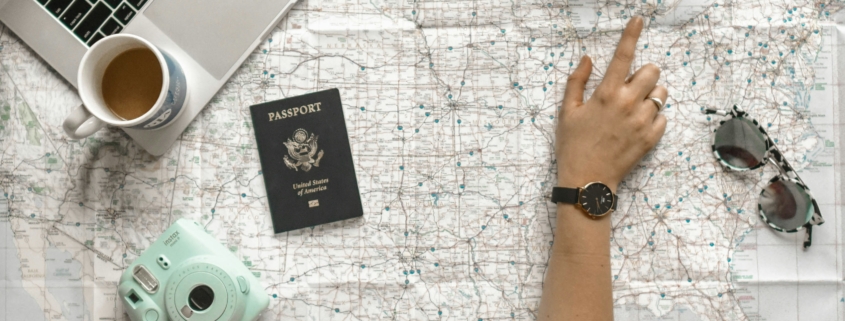There’s something enchanting about wandering European streets at twilight. As the last rays of sunlight fade behind aged rooftops, the city begins to hum with a different kind of life. Lanterns flicker to life, cobblestone alleys echo with footsteps, and secret corners of towns and capitals alike begin to glow. It’s a transformation that tourists often overlook in their daylight pursuits, but for those who linger past dinner, Europe after dark holds a unique magic.
Even in lesser-known towns, nightfall brings out hidden narratives. A modest square that seemed quiet at noon may now play host to jazz musicians improvising in candlelit cafes. The scent of fresh pastries gives way to perfume and old wine, and shutters crack open to reveal life lived behind closed windows. For locals, this rhythm is familiar. For visitors, it can feel like slipping into a dream.
Street lamps across cities such as Ljubljana, Tallinn, or Seville are more than mere illumination—they’re sentinels of a place’s character. A walk beneath them reveals more than guidebooks ever could. The hush of a museum garden at night, the laughter spilling from a rooftop bar, or the slow procession of bicycles along canal paths—these details shape a deeper understanding of each destination.
Photography enthusiasts often find their greatest inspiration not under bright skies, but when working with shadow and contrast. The interplay of light and structure transforms ordinary places. A modest fountain in daylight becomes an ethereal sculpture by night, while modern sculptures cast shadows across medieval walls. It’s this merging of times and textures that gives so many European cities their layered identity.
As night thickens, certain buildings—many of which seem dormant during the day—start to assert their presence. Some are concert halls or former opera houses now hosting midnight movie screenings. Others are multi-use spaces with modern facades hiding art installations or late-night poetry readings. A few are grand buildings whose public purpose is unclear to the casual passerby. Their lighting is often dramatic, not to highlight their function, but to emphasize their stature in the architectural narrative.
Amid this dynamic urban theater, one often encounters spaces where tradition meets innovation. While their original function may be decades—or centuries—old, their current roles reflect the pulse of today’s youth and creatives. In Vienna, for example, a former postal office has been transformed into a night bazaar for sustainable fashion and coffee tastings. In Porto, a decommissioned train station now offers immersive dance performances on Saturday evenings. It is within these spaces that one sees Europe’s resilience and ability to reinvent itself.
Cultural centers also emerge at this hour. Bookshops that double as wine bars, record stores that host live sessions, or design studios with gallery openings—each one reinvents the idea of what a public venue can be. Many such experiences are low-cost or donation-based, inviting a wide range of people to take part. Travelers often find themselves sitting beside locals, sharing a cheese plate while discussing the latest street mural or experimental theatre piece. These moments forge connection, even across languages.
In this vibrant mix of nocturnal life, digital culture weaves itself into the analog atmosphere. QR codes tucked into murals lead to audio guides or short films. Interactive street installations playfully challenge passersby with sound and light. Even traditional banners or posters might include references to online platforms or cultural reviews, sometimes with names that surprise by their boldness or curiosity. A perfect example might be stumbling across a flyer mentioning lemoncasino vélemény in a creative district of Warsaw or Sofia, where street art and digital trends converge.
These urban signposts, often colorful and cryptic, reflect a broader shift in how people consume and navigate city life. Travelers today are just as likely to follow a podcast recommendation as they are a map. Events are discovered via live streams, and pop-up experiences appear and vanish in hours, promoted only through cryptic social media clues or holographic projections onto landmark buildings.
Despite this modern edge, European nights are rooted in rhythm rather than speed. This is perhaps most evident in how people gather. Communal outdoor tables stretch across plazas, with diners moving slowly from aperitif to dessert. Strangers are welcomed, stories are shared, and time seems to suspend. You might meet an architect describing her newest restoration project in Marseille or a university student reciting translated poetry in Vilnius. The night belongs to those willing to listen.
There’s a sense of gentle rebellion in the air—against the pressures of efficiency, against the noise of daily obligation. People are not rushing, not chasing anything. They’re being. This attitude permeates everything: the casual dress code of rooftop cinemas, the slow melodies of street musicians in Kraków, the lingering eye contact over espresso in Turin. Life feels fuller at night, not louder.
The quieter corners of these nights offer the most potent memories. A walk along the river in Lyon with only distant music for company. A candlelit library in Bruges where locals gather for storytelling. An old fisherman’s boat repurposed as a floating bookshop off the coast of Naples. These are not the main attractions, but they leave a lasting mark.
And it’s often in these overlooked hours and modest moments that travelers feel most connected to a place. The city becomes less of a backdrop and more of a companion. A place not just to see, but to inhabit. A rhythm not just to hear, but to follow.
Across Europe, these nightscapes remind us that beauty and inspiration are not limited to monuments or museums. They dwell in alleyways, in whispers, in unexpected signage, and sometimes in conversations sparked by curiosity over a curious name—perhaps even lemoncasino vélemény scrawled in elegant script at the edge of a mural. Because when daylight fades and neon glows, cities don’t sleep—they breathe.

